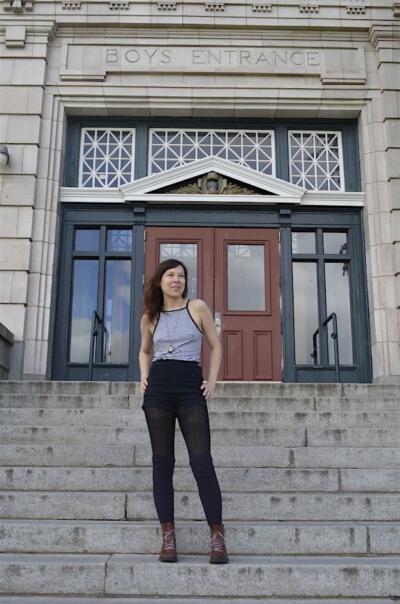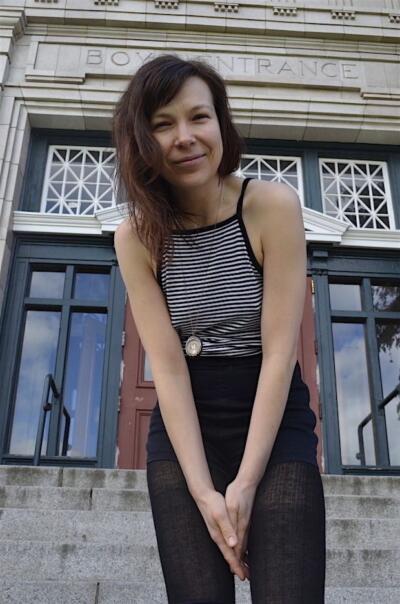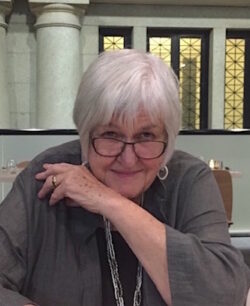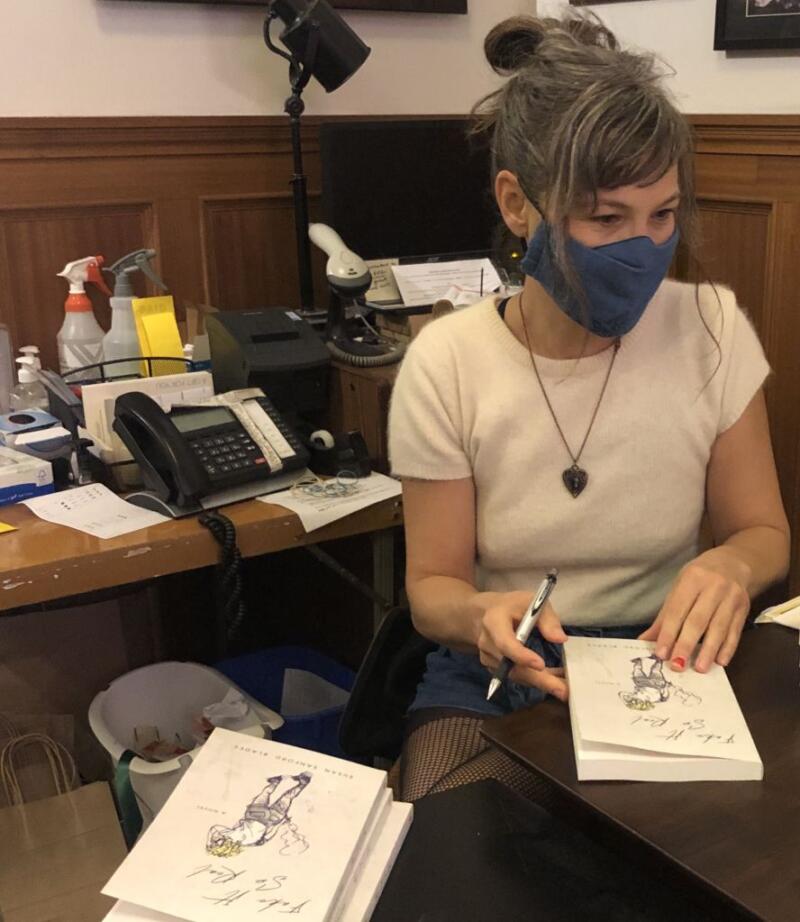1364 Vodka, bubble bath, blue lines
Fake It So Real
by Susan Sanford Blades
Gibsons: Nightwood Editions, 2020
$21.95 / 9780889713888
Reviewed by Carol Matthews
*
 “I sometimes call it, like, a punk rock Alice Munro,” Susan Sanford Blades said about her debut novel Fake It So Real in an interview with Capital Daily. While it does focus on some of Munro’s topics, adolescence, marriage, divorce, motherhood and the daily lives of girls and women struggling against adversity, the book lacks the irony and honesty that illuminate Munro’s short stories and it presents characters who are a lot less likeable than those Munro offers.
“I sometimes call it, like, a punk rock Alice Munro,” Susan Sanford Blades said about her debut novel Fake It So Real in an interview with Capital Daily. While it does focus on some of Munro’s topics, adolescence, marriage, divorce, motherhood and the daily lives of girls and women struggling against adversity, the book lacks the irony and honesty that illuminate Munro’s short stories and it presents characters who are a lot less likeable than those Munro offers.
Fake it So Real is not a novel everyone will enjoy. If you don’t like the idea of being immersed in every kind of bodily fluid such as blood, sweat, semen, urine, shit and snot, you should not begin it. The novel opens in June of 1983 and in it, from the first sentence when Shepps enters the “seagull shit-streaked doors of Pluto’s Diner,” we are introduced to a world which is unfailingly grimy, gritty and bleak. Shepps is braceleted by masking tape and is “as greasy and limp as an undercooked French fry.” Gwen, the novel’s protagonist, is “traipsing around the joint, braless in a pit-stained T-shirt, snarling at customers through her ever-moist Fire Red pout.”

By the third page, Shepps is turning up every afternoon asking to eat Gwen out and then “smearing Gwen over every inch of vinyl in the place.” On the sixth page, Gwen is having sex with Damian Costello, the leader of the band Dorothy’s Rainbow, who “shimmied her on to the beach and banged her head on a rock before flopping on top of her.”
After a brief pause, still on page six and sometime in July, the setting has changed and on Damian’s coffee table we see:
bags of Cheetos, Gwen’s bare ass, two guitars, seven pipes, Ricky’s spare change, Damian’s bare ass, the soles of Gwen’s shit-kickers, one issue of Verbal Assault, seven tea lights, ten two-sixes of vodka, one burning stick of patchouli, three boogers, one wad of Hubba Bubba and a small, terrifying object.
The terrifying object’s urine-soaked blue line prompts the question “Do we want this?” and after a brief discussion in which the prospective parents wonder if they want to kill a “baybeh” until Damian says, “Fuck, yeah. A baby. An experiment. A tiny me.”
It seems an inauspicious start for a fetus but Gwen and Damian get married, have another baby, Meg, and stay together for about seven years until Damian disappears, leaving Gwen with two children for whom she seems unable to care, physically or emotionally. When the teacher at her daughter Sara’s school asks for a meeting, Gwen struggles to pull herself together and parades the girls out of the apartment, “their teeth gummed with cereal crumbs, the hands milk-sticky.” Asked about the girls’ behaviour at home, she can’t answer because at home she lived “from bubble bath to bed” and “Everything in between was a vodka-smeared blur.”

Some readers may have stopped reading by now but, if you are like me, you may somehow be gripped by Gwen’s bizarre world and want to know how the two daughters will fare. The next 210 pages are really just variations on the same themes and tropes, and yet there is something that draws you on. Not surprisingly, the daughters do not have easy lives. Most of the men in this novel are selfish and immature and, given the absence of their father and the erratic presence of their drunken mother, neither Sara nor Meg have any idea of how to be wives or mothers.
What is it that lures the reader into these lives? Is it the vigour of the language describing people who don’t do much and rarely communicate with each other but are given to flopping, slamming, traipsing, spinning, sucking, gasping, squishing, grabbing, flipping, sloshing and squeezing which fascinates us? Or do we read it in order to see what happens to this collection of unappealing young people? (In the mid-eighties, when this novel is set, I spent a certain amount of time in Victoria hanging out in coffeehouses and clubs at poetry readings but I don’t recall meeting people like these ones.) Are we meant to better understand the misfortunes of a marginalized little group of poor, unkempt and ill-fated misfits? It’s not clear, and yet I read though to the end.
The book consists of fourteen linked stories, eleven of which were first published in a variety of literary journals, including one which was selected for the Journey Prize anthology. This publishing history testifies to the power of the writing and its appeal to many editors. I don’t see it as punk Alice Munro. Although linked, the collection lacks the flow and vivacity of Lives of Girls and Women, but it does have the urgency of a tale that needs to be told.
*

Carol Matthews has worked as a social worker, as Executive Director of Nanaimo Family Life, and as instructor and Dean of Human Services and Community Education at Malaspina University-College, now Vancouver Island University (VIU). She has published a collection of short stories (Incidental Music, from Oolichan Books) and four works of non-fiction. Her short stories and reviews have appeared in literary journals such as Room, The New Quarterly, Grain, Prism, Malahat Review, and Event. Editor’s note: Carol Matthews has also reviewed books by John Vigna, Hiromi Goto, Anita Lahey, Ivan Coyote, and Tamara Macpherson Vukusic for The Ormsby Review.
*
The Ormsby Review. More Books. More Reviews. More Often.
Publisher and Editor: Richard Mackie
The Ormsby Review is a journal service for in-depth coverage of BC books and authors in all fields and genres. The Advisory Board consists of Jean Barman, Wade Davis, Robin Fisher, Cole Harris, Hugh Johnston, Kathy Mezei, Patricia Roy, Maria Tippett, and Graeme Wynn. Scholarly Patron: SFU Graduate Liberal Studies. Honorary Patron: Yosef Wosk. Provincial Government Patron since September 2018: Creative BC
“Only connect.” – E.M. Forster

5 comments on “1364 Vodka, bubble bath, blue lines”